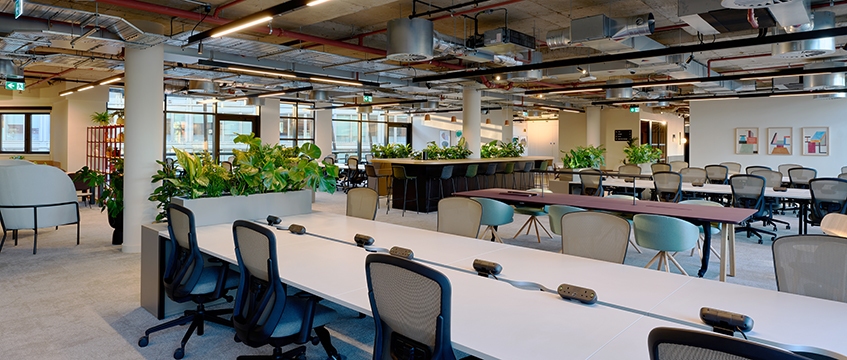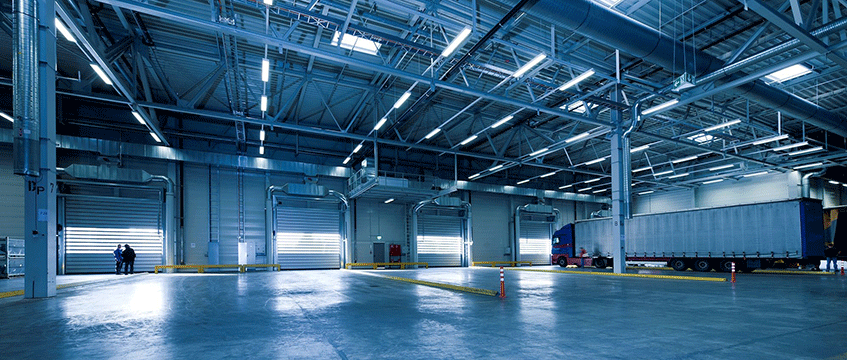Big shed take-up levels signal return to ‘normality’
Take-up for large industrial and logistics warehouses totalled 29.1m sq ft across 130 deals in 2023, according to the latest data from Savills.
Leasing activity fell by 40% last year compared with 2022, according to the agent’s latest Big Shed Briefing report, which covers warehouses measuring more than 100,000 sq ft.
Kevin Mofid, head of industrial and logistics research at Savills, said the year-on-year decline “signifies a return to normality, with the high levels of activity seen during the pandemic unsustainable in the long term”. Last year’s level was 12% above the pre-Covid average.
Take-up for large industrial and logistics warehouses totalled 29.1m sq ft across 130 deals in 2023, according to the latest data from Savills.
Leasing activity fell by 40% last year compared with 2022, according to the agent’s latest Big Shed Briefing report, which covers warehouses measuring more than 100,000 sq ft.
Kevin Mofid, head of industrial and logistics research at Savills, said the year-on-year decline “signifies a return to normality, with the high levels of activity seen during the pandemic unsustainable in the long term”. Last year’s level was 12% above the pre-Covid average.
The majority of demand was for build-to-suit space, accounting for 41% of take-up. Nearly two-fifths (39%) was for second-hand space, followed by 14% for new and 6% for prelet, speculatively developed space.
Some 72% of leasing deals focused on grade-A space, with 14% grade B and the remaining 14% grade C.
By size, 67% of last year’s deals were for warehouses measuring 100,000-200,000 sq ft, followed by 15% for 200,000-300,000 sq ft. Around 7% sought sheds measuring over 500,000 sq ft.
Third-party logistics providers and manufacturers accounted for the lion’s share of take-up by occupier type, amounting to 26% and 23% respectively.
Rental growth prospects
The vacancy rate for 2023 stood at 7.2%. Supply rose by 90% to nearly 49.6m sq ft during the year. Of that total, 38% is now grade A, speculatively developed space. A fifth is other grade A space, while 19% is grade B and 22% is grade C.
Some 12.3m sq ft is under construction across 57 units. The highest concentration is in the West Midlands, totalling 2.9m sq ft.
Mofid said occupiers have taken “a more cautious approach when it comes to acquiring space”, since the market has been impacted by macroeconomic events.
However, Mofid said he expects that vacancies will decline as the year progresses, with “speculative announcements falling by 34% in 2023 and take-up for existing units remaining strong”. This will enable continued rental growth “as pockets of undersupply remain across various key UK markets”.
Outlook for 2024
Rents are expected to rise this year, with Savills forecasting 4.9% baseline rental growth in its Big Shed Prospects report, published in recent weeks. The key drivers behind this included the sector’s limited pipeline, “robust” leasing activity at existing premises and “limited appetite” from capital markets to fund further speculative development.
The report added that there is “a case for delivering speculative units [measuring] over 400,000 sq ft” into late 2024 and early next year, since those supply bands remain undersupplied.
The agent pointed to 26m sq ft of lease events taking place this year. Researchers said they expect to see “strong levels of requirements, driven by a desire to move to more modern facilities that meet corporate ESG targets”.
Vacancy rates to decline slowly
Vacancy rates are predicted to fall “gradually” in 2024, as occupiers commit to taking existing facilities. However, Savills noted that this could be offset by a potential “wave of occupier-controlled space coming to the market” early this year, as companies seek to “rightsize their portfolios by making space available for assignment or sublease”.
Transaction volumes for the sector are estimated to reach £8bn in 2023, falling from the “dizzying heights” of the previous year, when £17bn was transacted, and 2021, when £21bn changed hands.
Investor confidence is expected to strengthen in the second half of this year, on the back of predictions that base rates will start to fall.
Savills expects the focus will be on standing income-producing assets, rather than assets higher up the risk curve such as development funding.
Bill for EPC B to reach £9.5bn
Savills also estimated that it will cost investors £9.5bn to improve all UK warehouse stock to achieve an EPC B rating.
The report noted that logistics as an investment asset class is still relatively young compared with other sectors. The first generation of logistics buildings was delivered in the late 1980s as grocers sought to modernise their supply chains for the supermarket era.
Savills said that some of the premises among that first generation of buildings are approaching the end of their initial leases, prompting discussions about whether they are still useful as logistics assets.
More bifurcation is predicted as the decade progresses. Occupiers are expected to favour prime assets, according to researchers, and stranded assets are likely to emerge as landlords decide how to improve or replace properties that do not meet ESG standards.
To send feedback, e-mail pui-guan.man@eg.co.uk or tweet @PuiGuanM or @EGPropertyNews
Image © EFAFLEX_Schnelllauftore/Pixabay











